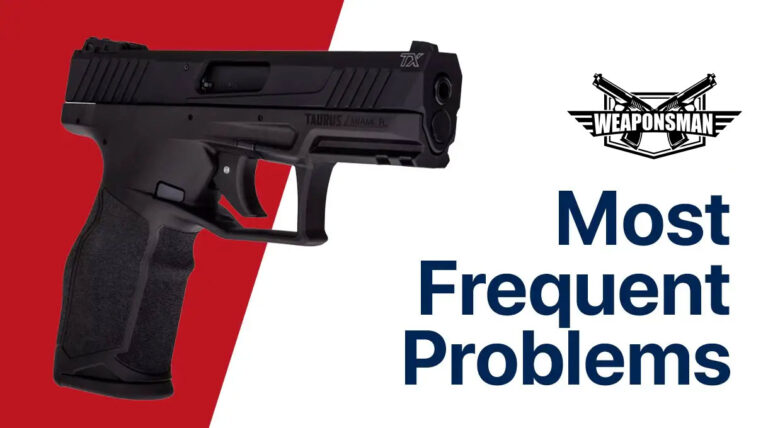Today, we’re going to be looking at one of the more famous, or, perhaps we should say infamous pistols of the last few years, the Taurus TX 22. To set the stage and give you some context, we’ll start with some brief specifications for the pistol more generally, before spending much of the piece talking about the issues that people have had with the platform, as well as some possible solutions should you run into them yourself.
Like with all firearms, the Taurus TX22 has its own unique set of challenges. Our goal is to inform all gun owners and potential buyers of what issues to look for. Taurus makes some good firearms, so this piece isn’t necessarily an indictment of the pistol. All in all, we think that the TX 22 has some promise as an idea, but there are a number of reported issues by users you should be aware of.

The Taurus TX 22 is a line of pistols that are striker-fired, magazine-fed, direct-blowback .22LR pistols. They come in a few different variations: some have 10 round magazines, and others have 16 round capacities. There are some that have a manual safety, and others that rely on a trigger safety. Currently, Taurus also offers several models in different colors, along with the option to have lightened slides, compensators, or threaded barrels. Regardless of the flavor you choose, the basic action is the same, and, sadly, might be a fairly common source of issues.
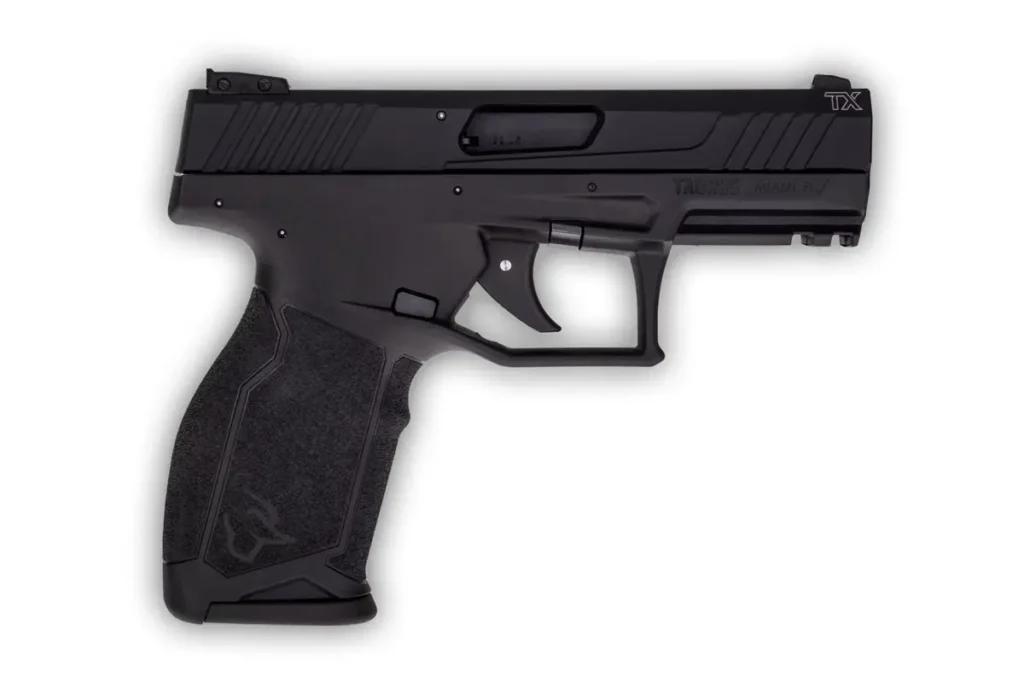
1. Bullet Keyholes at Short Range
Upon taking their brand new Taurus Tx22s to the range, some shooters found that they were seeing keyhole-shaped holes in the paper at ranges of three yards or so.
These keyholes are caused by a bullet tumbling. There can be several causes for this: at long range, bullets begin to tumble. Or, at close ranges, something is happening to destabilize the bullet. Since people reported this problem at single-digit-yard ranges, we strongly suspect that the issue here is that the bullet is being destabilized.
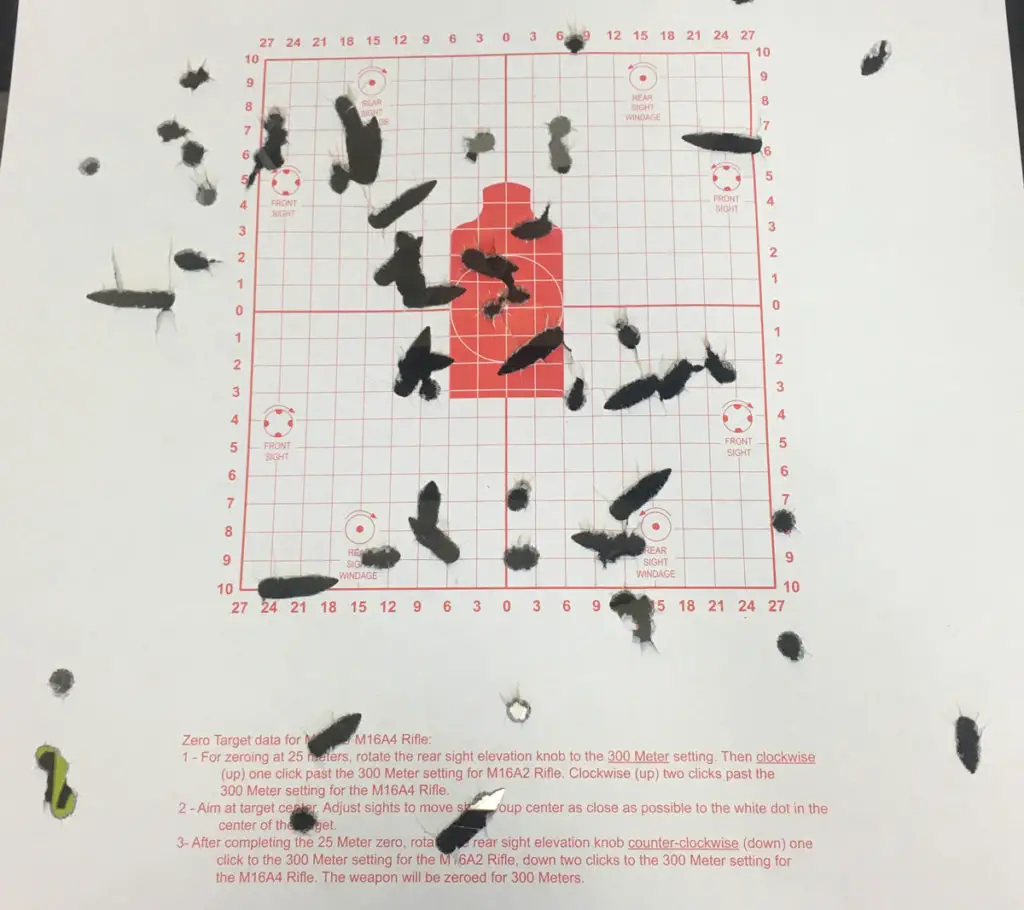
Taking a closer look at their guns, some users found that the barrels themselves had an issue. The rifling in the barrel, which is supposed to stabilize the bullet, was not concentric. That is to say, the rifling was not parallel with the barrel, and thus the bullet was coming out of the barrel tumbling. This leads to a barrel that is not only highly inaccurate but will wear out a lot faster. In a .22, this will likely substantially decrease the barrel life. In any other caliber, it’s likely to lead to the barrel blowing apart. This is a major manufacturing and quality control issue.
How to fix it
The only way to fix an issue wherein the barrel is inherently flawed from the factory is to send it back to the factory and have it replaced. If you’re the original, new owner, this means being without your gun for some time, and likely paying for some shipping and transfer fees. For secondhand buyers, sadly, this usually means that your Taurus TX22 has an effective range of about five feet, and it might well be dangerous to shoot. It’s for this reason that buying a used TX22 is an iffy prospect for most people.
2. Failures to Feed
Some folks have also reported failures to feed. That is to say, they insert a magazine with bullets in it, rack the slide, and then the gun does not chamber a round, or does not go completely into battery inside the chamber. Or, when firing from a magazine that’s already in the gun, the first round will fire, but no second round is loaded despite there being a round in the magazine still.
Failures to feed can come from several causes. First, a magazine that’s not properly seated might not feed properly. Sticking with the magazine, if the spring is weak or worn out, then it may not have the power to feed the round into the chamber. Depending on the firearm and the bullet shape, the feed ramp can also cause issues. For instance, if the feed ramp is too short, a hollow point round might catch on the lip and refuse to feed.
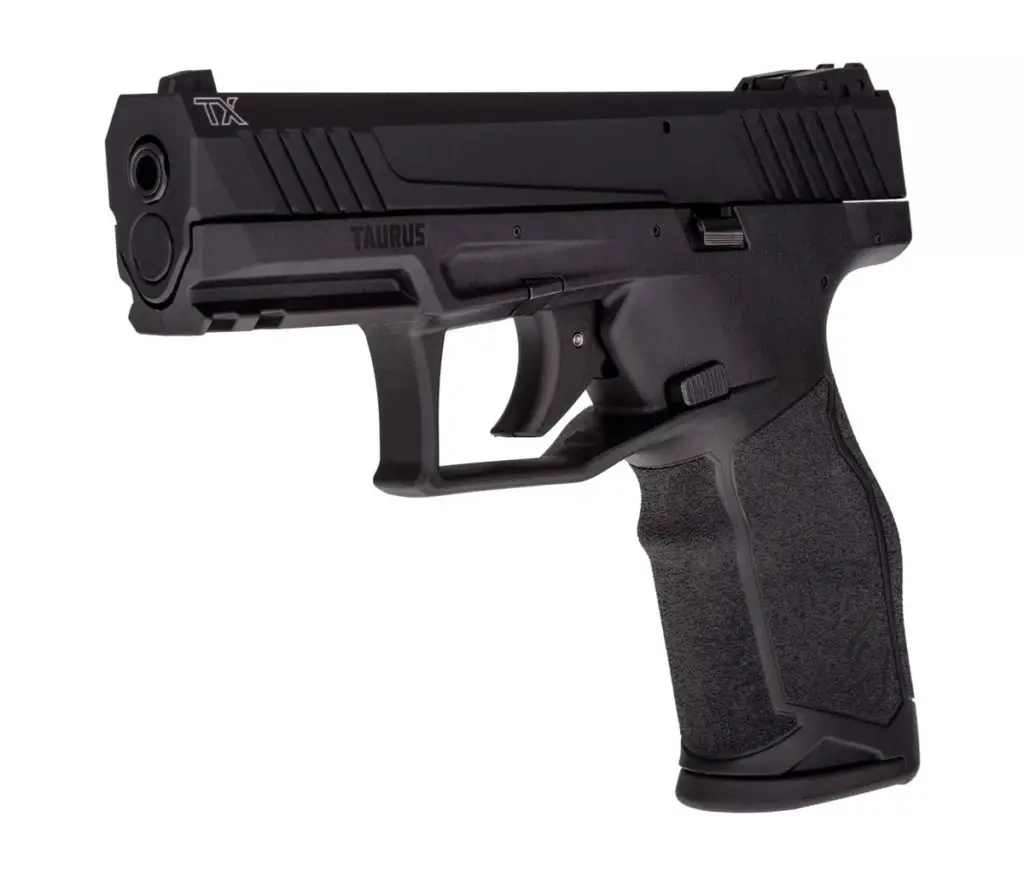
How to fix it
Normally, to fix a failure to feed begins with pulling the magazine out, letting any loose rounds fall to the ground, and then re-inserting the magazine. I also recommend giving the magazine a good smack to make sure that it’s seated.
If that doesn’t do it, this might cost some money. First, try different ammunition and see if the problem replicates itself. Then, we would recommend buying a new magazine and trying that, to see if it solves it. If that’s not the case, then there might well be an issue with the geometry of the feed ramp, which would require sending the gun back to Taurus in the hopes that they will fix or replace it.
3. Failure to Eject
Okay, so you managed to get rounds into the gun, and down range relatively straight. Now, after firing a round you feel as though something is wrong. Either the spent casing has not left the chamber and caused a jam, or you see a .22LR casing sticking out from the ejection port of your TX22, wedged in by the slide. This is a failure to eject, and a few things can cause it.
First, if the round is a dud, or does not have enough power, there might not be enough energy left in the system to push back the slide and the ejector, and then eject the spent cartridge. This is somewhat common in .22LR guns and happens to all of them with cheaper ammunition.
There might also be an issue with the ejector: if it’s out of position it might not pick up the spent cartridge, causing it to remain in the chamber.
Finally, it’s possible that the recoil spring is overpowered, meaning that it will force the slide shut prematurely. This is also somewhat common in smaller caliber guns, as it is tricky to get the right balance in weights and spring tensions to ensure smooth function.
How to fix it
First, try a hotter ammunition that has more velocity. Subsonic rounds are likely a bad idea here, but loads with more velocity might have the kinetic energy necessary to get the gun moving properly.
If that doesn’t do it, then replacing the recoil spring is likely the next step you can try at home. A too-strong spring might be causing the issue. Finally, if all else fails, the gun might be going in a box back to Taurus to sort out the extractor isn’t in the correct place or configuration.
4. Cracked Slide
Some folks have seen cracks in parts of the slides, especially near the chamber area where the slide is thin, on their TX22s. In a 22, the only reasonable cause I can think of for this is poor metallurgy and low-quality materials being used in the casting process.
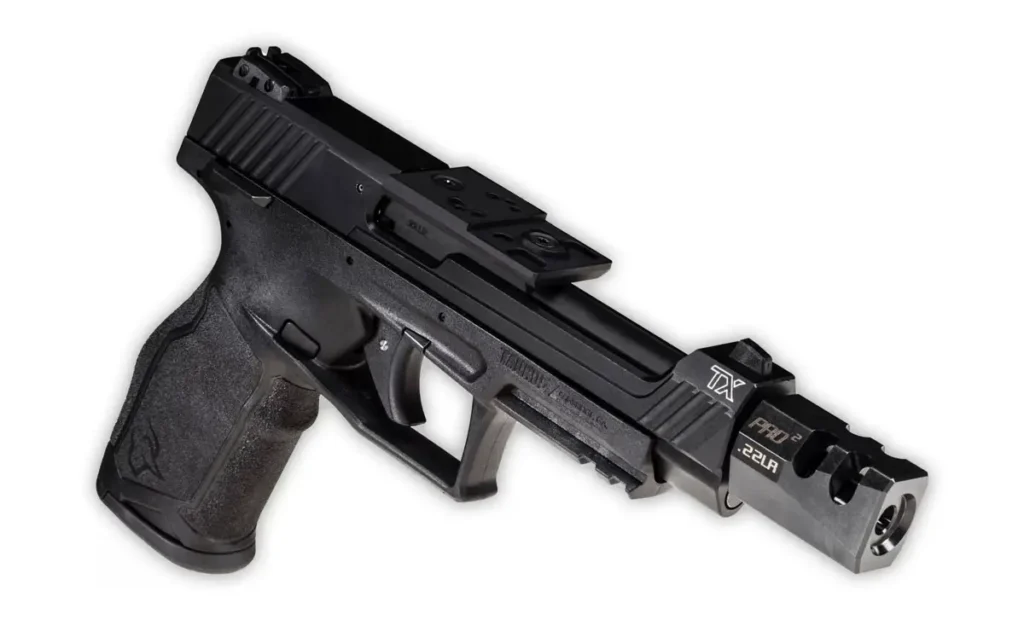
How to fix it
You should make no attempt whatsoever to fix a cracked slide yourself, nor should you continue to fire the gun as soon as you notice it. If the slide has a major structural failure, you might well end up catching a piece of it in the eyes or somewhere else important, leading to injury or death.
If the gun is still under warranty, take some pictures and send them to Taurus. Hopefully, they’ll offer to send you a new slide in the mail. Otherwise, the gun is going back to Taurus.
Our Thoughts
We don’t want this piece to be a total smear against Taurus, or even the TX 22. As a company, we generally quite like Taurus products. One of our writers, who might have been playing too much Red Dead Redemption 2 lately, is seriously considering picking up a Taurus 605 as a concealed carry revolver.
Apparently, many of the issues we’ve detailed here come from the past few years but drop off substantially in the period since 2019. Thus, it’s entirely possible that Taurus has fixed a great many of these problems in more recent years. Looking at the TX22 lineup today, a threaded barrel model might make an awesome suppressor host and a fun range gun. But, we’d be pretty wary about picking one up used.
Conclusion
Overall, the Taurus TX22 is a great gun and is loved by many. Most people will likely never run into any of these issues, but if you do – hopefully this guide can help you fix them.
Like all mechanical tools that undergo large amounts of stress and pressure, it can have its own set of problems that users might face. Some of these are pretty minor and easy to fix while sometimes these can be more serious.

